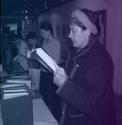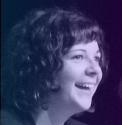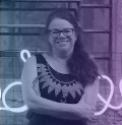 Master Class dirigida por Parvathy Baul (India)
Master Class dirigida por Parvathy Baul (India)
Durante el taller, Parvathy Baul introduce algunos elementos básicos de la práctica de canto Baul, incorporando la danza y el movimiento de todo el cuerpo.
Los participantes aprenderán algunas canciones y conocerán la tradición Baul a través de la experiencia directa de Parvathy y de algunas imágenes que ella mostrará durante el workshop.
Es necesario que los participantes lleguen 10 minutos antes del comienzo de la actividad y que se queden sentados en silencio durante este tiempo. La artista india nos pide recordar que el Baul Parampara se suele transmitir durante años de estudio con un Gurú que acompaña a los jóvenes en el conocimiento del canto Baul.
Hay que tener en cuenta que el Baul Parampara no es solo un líder de taller o un entrenador, es un Guru Shishya Parmpara.
Recibimos a Parvathy con el respeto que se le debe a un Maestro de Baul, conscientes que sus enseñanzas proceden de una tradición muy antigua y que le han sido transmitida a través de una generación de Maestros.
Esto requiere muchos años de práctica, bendiciones del pasado, y la aceptación de los Baul Gurus para obtener la autoridad de enseñar Baul.
Materiales a traer:
Un bolígrafo y cuaderno.
Un aparado no profesional ( el móvil es suficiente) para grabar las canciones que se estudiaran.
Calcetines blancos que faciliten el movimiento del pie, para poder trabajar sin zapatos en la sala de ensayo.
Si los alumnos tocan instrumentos, percusión, campanas, cimbeles o campanillas (de tobillo), que las traigan.
Parvathy Baul
Cantante de música Baul y narradora india. Es una de las artistas más reconocidas de la música Baul de la India.
Se formó bajo la tutela de los gurús como Baul gurus, Sanatan Das Baul, Shashanko Goshai Baul en Bengala. Además ha estado llevando a cabo sus giras de conciertos, tanto en la India como en otros países desde 1995. Basa su residencia en Thiruvananthapuram en Kerala, desde 1997, donde también trabaja como profesora de música en el "Ektara Baul Sangeetha Kalari" una escuela superior de la música Baul. Es una de las primeras mujeres en estudiar, y ahora enseñar, la técnica del canto Baul, sólo practicado por hombres durante siglos en el noroeste de India, actual west Bengala y Bangladesh. Es actriz del Odin Teatret y fue maestra invitada durante la última edición del ISTA.
Algunas palabras sobre la tradición de Baul
El Baul pertenece a una "contra- tradición" no conformista que ha evolucionado desde la capa más profunda de la tradición Yogi india y lleva solo la verdad interna de este Parampara.
Geográficamente, la tradición Baul se originó en la parte noreste de la India, en Bengala (ahora conocida como Bengala Occidental y Bangladesh). Esta tradición busca la libertad de todos los límites artificiales e incluso del cuerpo humano donde el alma está aprisionada como un pájaro enjaulado.
Aunque el amor ilimitado de Radha por Krishna se celebra en la poesía de Baul, lo que hace a Baul diferente de otros santos es que no cantan alabanza de ninguna deidad o dios específico. Según Baul, quien encuentra 'Khuda' 'Krishna' o 'Dios' en el hombre es un Baul.
Se cree que esta tradición está viva desde los tiempos de los Vedas; en Bengala, las huellas de las canciones de Baul se pueden encontrar en los budistas de Doha del siglo VII o "Charyageethi" de los Santos de Bouddha Abhadhooti.
Esta tradición fue inspirada en varias ocasiones por el Siddha (el parampara de los Avadhootha Yoguis) Tantra, Sufi y el movimiento Vaishnava Bhakti del siglo XV.
Las canciones de Baul son conocidas como 'Shavda Gaan', Shavda es Bramhan, estas canciones también son Mahamantra. La poesía de Baul se conoce como 'Mahajan Pad', (canciones de las grandes almas), Mahajan Pad está compuesta en lenguaje bengalí simple. Las visiones de los Bauls se transmiten en forma poética y pertenecen a una esfera que se encuentra entre la filosofía y la poesía, la música y la danza. El lenguaje de la poesía de Baul es poco convencional, también conocido como el "Sandhya Bhasha" o el lenguaje oculto.
Para entender Sandhya Bhasha se necesita un corazón compasivo y conciencia. Para los iniciados, estos versos sirven como una clave para revelar el significado superior cuando entran en un estado profundo de meditación. Es una tradición viva que se integra activamente en la vida de la India contemporánea.
CUÁNDO: 10 y 11 de febrero de 9 a 13:30
DÓNDE: Centro de Artesanía de las Artes Escénicas (CAAE)*
Calle Ercilla 48, Madrid (Metro Delicias- Embajadores-Acacias)
DONATIVO: 100 euros (50 euros para oyentes)
IDIOMA: Taller dirigido en inglés, si los alumnos necesitan traducción tendrán que informar la organización a la hora de cumplimentar la inscripción.
En colaboración con: Casa de la India
http://www.residuiteatro.com/talleres-monograficos/the-singing-body-in-the-baul-parampara







